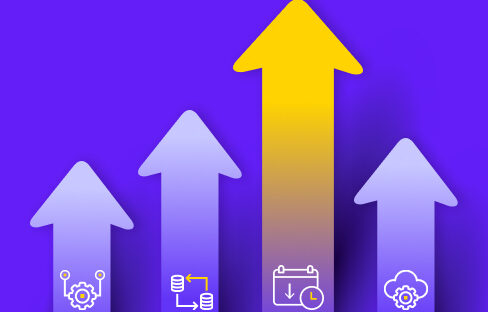Marketing agencies are familiar with dealing with multiple analytics, advertising, and media buying platforms, each of which will also have a separate account for each of the clients or products they’re promoting. They’re not alone.
When large companies companies grow and expand their digital efforts, they also often require different accounts for different teams or divisions to operate indpendently.
However, there comes a time when all the data generated from this platforms needs to be aggregated to create reports that can be reviewed.
For example, an digital marketing agency will want to streamline and connect data from all Google Adwords across all their client roster, while a large company might want to review all the Facebook spend across their brand portfolio globally.
Orchestrating A Data Pipeline
At Rivery this is a something we’re familiar with as many of our customers are faced with the challenge of orchestrating data from multiple clients, accounts, or teams.
With simplicity and efficiency in mind, we wanted to make sure Rivery didn’t only enable people to add data sources and create a serverless data pipeline.
In order to save our customers time, money, and effort when managing multiple accounts for a platform we implemented the following features on Rivery’s data pipeline tool:
Integrated Data Management: One-time Integration Across All Accounts
You only need to integrate a platform once with Rivery.
This means that for example, if your business needs to manage multiple Facebook Ads accounts associated with different sites from multiple clients or brands you don’t need to go through the process more than once.
Configuration doesn’t need to be changed to add new accounts, you can pull data from all accounts into a single river. This means that you’ll save time setting up, and money by not pulling unnecessary data multiple times.
Full Functionality of Source API
Different teams need different metrics.
For example, for a brand advertising on Facebook their main metric could be fanbase growth while for a different brand their KPI might center around social interactions on promoted posts. In addition, different teams need to breakdown their target audience or segments differently.
Data for different clients will be inherently different and needs to be extracted and processed to suit their needs.
Every platform integration through Rivery gives companies the ability to get any type of data from a given API. There’s no limit as to the dimensions of data that can be explored within a platform integration.
These dimensions can include any type of ROI metric, audience breakdown, KPI, or combination of those.
Automatically Add New Accounts
New accounts can be added automatically to your data pipeline.
So for example if you’re a marketing agency managing Google Adwords for numerous clients, when you add a new client to your roster and connect their AdWords account to your company, you can set up the system to automatically begin pulling data from it. (For this example, see: ETL Google Adwords)
This means that you can run business as usual, and keep expanding or including new clients without having to remember going through numerous processes to line up the data.
This is particularly helpful for fast-paced business that are constantly adding new accounts. Having this data automatically extracted and lined up to the rest of your operations as soon as it’s connected means that you don’t have to waste time orchestrating setup for new client’s data sources.
Cross-manipulation with multiple data sources
Cross-manipulation of data with multiple sources is essential for any business – whether you’re an agency or a large company with a complex marketing operation.
Measuring effectiveness around advertising spend and assessing ROI isn’t an easy task and it will always require combining and manipulating data from multiple sources such as attribution platforms, advertising platforms, web analytics, etc.
With this big challenge in mind, Rivery now enables companies to sync all data in a way in which platforms ‘talk to each other’ and changes made are reflected across the data pipeline.
For example, you might want to measure mobile advertising ROI by combining the data from multiple Facebook Ad accounts with their respective AppsFlyer attribution accounts.
If you’re a marketing agency or team dealing with these challenges and trying to figure out better ways to align all your data processes efficiently get in touch and our team will share the tips and tools to make it happen.
Minimize the firefighting. Maximize ROI on pipelines.





